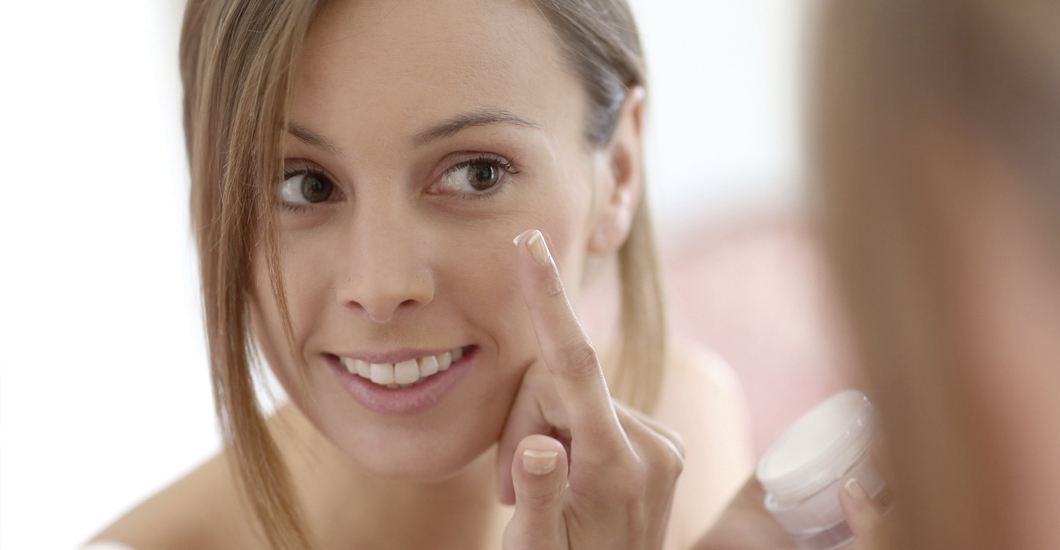Skin Spots
Doctor's advice /

Moles, freckles, and spots are natural indications of aging on the skin, but they also show neglect when the skin has been exposed to the sun or suggest hormonal changes, like those that occur during pregnancy. Keep the following recommendations in mind.
Apply sunscreen daily the numbers could not be more convincing: 35% of women between the ages of 30 and 40 develop skin spots and darkening; and by age 45, the problem affects more than 60 percent of women. In the tropics, the skin’s exposure to radiation when performing daily activities (without direct exposure to sunlight) is enough to guarantee vitamin D synthesis, to help absorb calcium, regulate sleep cycles, and improve mood. But when abused, ultraviolet rays begin to damage skin cells.
A person can be exposed to the sun anywhere between 10 minutes and an hour without anything happening. It all depends on skin tone. Blond haired people with fair complexion are the most sensitive to sun rays, while dark-skinned people do not burn as easily. As a result, the cosmetics industry along with the scientific community has designed sunscreens with a sun protection factor. So what does this mean? The SPF is the amount of time the product allows people to be in the sun without burning. For example, if normally your skin turns red after 15 minutes in the sun with an SPF 10 sunscreen, you can be in the sun for 150 minutes without any problem.
The general recommendation is to use sunscreen every day with a minimum SPF protection of 30, even if it is cloudy or rainy. Dermatologists recommend reapplying after five or six hours, since sweat and environmental pollution make it less effective.
Don’t overdo exfoliating or peeling procedures when skin spots are caused by the sun and the passage of time, they can be minimized with mechanical, chemical, or laser peeling treatments. Mechanical peels remove the top layer of skin via abrasion using stone or crystal particles. Chemical peels use acids (like glycolic acid) to cause the skin to slough off, and laser treatments break up the spot’s pigment with pulses of light. Keep in mind that each time the skin is exfoliated, nutrients and protective substances are removed from it, making your face more sensitive to natural and artificial light.
As such, exfoliating the skin more than necessary can cause new spots to appear. You should not do so more than once a week, and if your skin is sensitive, you should not exfoliate more than twice a month.
How to reduce skin’s signs of aging
Skin aging is a complex and silent process in which changes occur in the skin over time. The result is an implied fate resulting from your cell’s genetic memory, which have a set length of time, but also results from the interaction with environmental factors like ultraviolet radiation (sun, tanning booths), tobacco smoke, car exhaust, and industrial waste. Your lifestyle also influences the outcome, including your dietary habits, exercise regimen, the quality of sleep, and daily stress.
The main skin changes during aging are: a decrease in its thickness, lack of blood circulation, less pigment-producing cells (melanocytes), deterioration and decrease in the amount of collagen, sebaceous glands, or sweat glands. As a result, the way in which you scar changes, you become more susceptible to sun damage, there is a decrease in vitamin D production, weaker circulation, and there is less sebum and sweat, with an increased risk of skin cancer.
Upon evaluation, the skin is dry and pale, there is an increase in fine lines and deep grooves, fragile and thin skin with irregular thickness, loose skin (on the eyelids, cheeks, and chin), dilated pores and a greater susceptibility for the appearance of benign tumors (keratosis, seborrheic keratosis, fibromas), and to a lesser extent malignant tumors. All of these changes are particularly visible or noticeable in the areas most exposed to the sun, in smokers, and in those people who have never taken precautions. There are recommendations to prevent or reduce these signs.
Initial prevention strategies exist that should be taken as the first step before the signs of aging appear or can help slow their development. These include appropriate sun protection (use of creams, clothing and appropriate actions taken when exposed to the sun), and healthy lifestyle habits—in particular, a balanced, low-calorie diet. Initial prevention is the foundation and should be complemented with additional measures.
These are useful in the early stages of aging, such that they can be reversed or can be stopped from worsening. They tend to be more cost effective, used daily, and easy to do with satisfactory results and without drastic changes despite being effective. Countless products are available, which are derived from vitamin A (or retinoids), compounds derived from fruit products (or alpha-hydroxys), topical antioxidants (vitamins E, C, etc.), moisturizers and emollients, co-enzyme A, oral supplements, etc.
You should favor products backed by scientific evidence in clinical or laboratory trials. These include topical substances that contain vitamin A derivatives or molecules (peptides) that stimulate protein synthesis in the skin or that relax the muscles responsible for facial expression. This leads to improvements in skin thickness, increased strength, a reduction in wrinkles, and a decrease in fine lines.
Lastly, there are skin rejuvenation interventions, including corrective procedures, which are usually invasive, that aim to partially reduce or reverse significant skin damage. These measures include chemical peels, dermabrasion, ablative and non-ablative lasers, botox, soft tissue fillers, lifts, and plastic surgery.
Ideally, these prescriptions and procedures are performed by appropriate, legally authorized, professionals, to obtain the best results and to reduce the risk of possible complications.
Don’t blame your liver some people believe that skin spots occur due to a poorly-functioning liver. However, many dark spots appear as the result of overactivity of melanocytes (cells that produce melanin, which gives color to your skin and eyes) when stimulated by the sun’s rays, rather than as the result of digestive or liver problems. Therefore, skin spots are a matter of genetics and sun exposure.
Other spots occur only in women: these appear during pregnancy or when on birth control. These spots are the result of hormonal changes, and luckily, disappear after birth or as soon as you stop taking birth control medication.
Be careful with skin bleaches Although there are many natural exfoliant products on the market that are available without a prescription, you should always check to see if the product is approved, that it has been scientifically tested on different skin types and that it is backed by a known laboratory. Therefore, you must read the fine print on the labels. With regard to home remedies, hydrogen peroxide or juice acid masks (e.g., lemon and salt or baking soda to try to clear skin) are not recommended, since these are irritating to the skin and can leave scars. To avoid the risks and to ensure that allergic reactions or irritation do not occur, abrasive procedures should be performed by a dermatologist.
Protect yourself from the sun after waxing Depilation, regardless of what method is used, is an assault on the skin. For this reason, you shouldn’t exposure your skin to the sun for 24 hours after hair removal to avoid spots. After waxing, a moisturizer and a sunscreen with a high SPF should both be applied for skin repair, sometimes natural extracts from flowers or plants are applied since these are thought to be harmless. Be careful, since these products may contain ingredients that can irritate the skin, such as alcohol, perfumes, or other preservatives. The best option is to ask for advice from a specialist to know which products are appropriate for your skin type.


